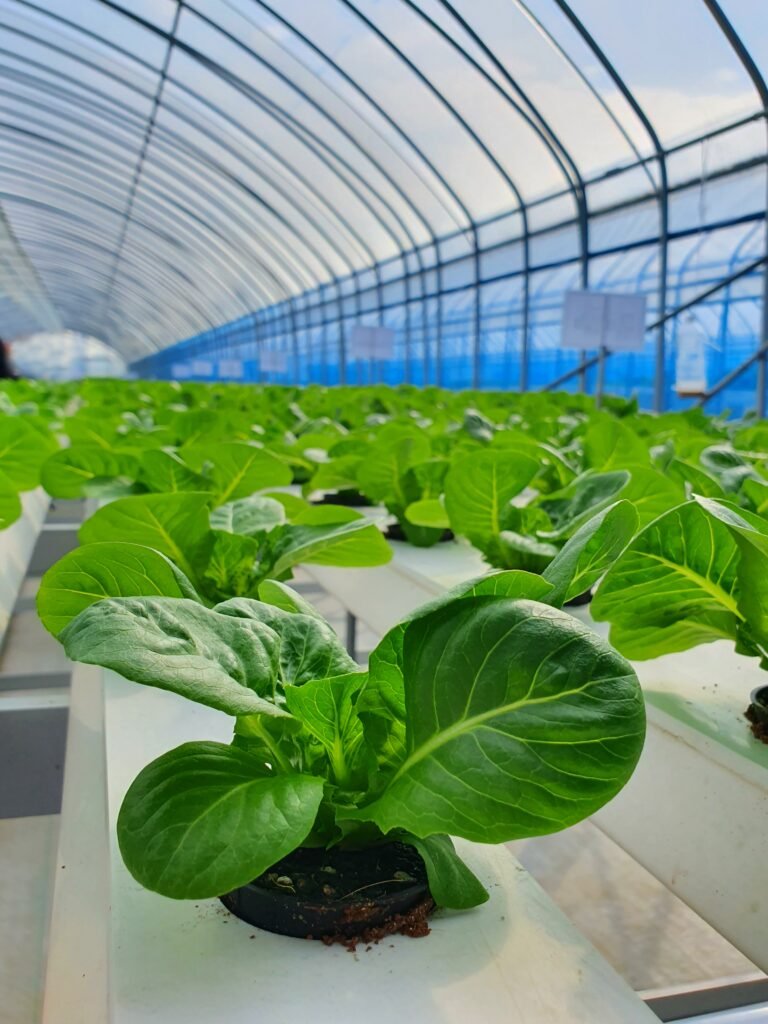Innovative News
Modern Farming Innovations | Safeguarding Our Farmers and Global Food Supply1

Modern farming innovations are transforming agriculture through technology, sustainability, and smart supply chains. Precision farming, AI-driven analytics, automation, and robotics enhance productivity while reducing environmental impact. Sustainable practices like regenerative agriculture, hydroponics, and organic pest management ensure long-term soil fertility and biodiversity. Blockchain, cold chain logistics, and digital marketplaces improve food distribution and access for farmers. These advancements are crucial for overcoming global food security challenges, ensuring a resilient agricultural future in the face of climate change and resource scarcity.
Technology’s Place in Modern Farming
Technology is now the foundation of contemporary agriculture. Farmers now have access to solutions that increase productivity and lower hazards, such as autonomous machinery and AI-driven crop monitoring. The following are a few of the most significant technological advancements in agriculture to date:


1. Intelligent agriculture and precision farming
Precision farming gives farmers access to real-time information about crop health, weather forecasts, and soil conditions through the use of GPS, IoT sensors, and AI-driven analytics. They can use this knowledge to support data-driven decisions that increase yield and decrease waste.
2. Agriculture Using AI and Machine Learning
The application of artificial intelligence (AI) to market trend analysis, fertilizer optimization, and agricultural disease prediction is growing. Large volumes of agricultural data are processed by machine learning algorithms to find trends that enable farmers to take preventative measures against possible dangers.
3. Robotics and Automation
The use of robotics in agriculture has improved productivity and decreased reliance on human labor. In addition to increasing productivity, automated tractors, robotic weed eaters, and fruit-picking robots are assisting farmers in addressing labor shortages.
Autonomous tractors are capable of precise seeding and field ploughing around the clock. Similarly, by automating detecting and eliminating weeds, robotic weeders do away with the need for chemical herbicides. This ensures healthier agricultural production while lessening the burden on the environment.
Sustainable Farming Methods
Modern farming is centered on sustainability. Farmers are moving towards eco-friendly methods that guarantee long-term soil fertility, biodiversity conservation, and a lower carbon footprint as environmental concerns grow.
1. Agriculture via Regeneration
Regenerative agriculture includes practices including crop rotation, cover crops, and minimum tillage to restore soil health. These techniques increase water retention, boost biodiversity, and improve soil organic matter.
For instance, growing cover crops in between harvests, such as legumes or clover, improves soil microbial activity, lowers the need for chemical fertilizers, and helps stop soil erosion. Long-term yields increase as a result, and natural ecosystems are preserved.
2. Hydroponics & Vertical Farming
Since there is less farmland accessible due to urbanization, vertical farming and hydroponics provide creative ways to raise food in small areas. These techniques yield high-yield crops all year long with much less water, no soil, and regulated conditions.
For example, hydroponic systems save water usage by up to 90% and do away with the need for soil by using nutrient-rich water solutions to support plants. Urban areas may produce fresh veggies using vertical farms stacked with LED-lit growing shelves, which lowers carbon emissions and transportation expenses.

3. Sustainable and Organic Pest Control
Because of their effects on the environment and human health, chemical pesticides have long been a source of concern. Biological control, companion planting, and integrated pest management (IPM) are examples of sustainable pest management techniques that are becoming more popular.
The Value of Innovations in the Supply Chain
Global food security depends on more than just farming practices; it also depends on making sure food is delivered to consumers safely and effectively. Innovations in the supply chain reduce food waste, increase market accessibility for farmers, and improve distribution.
1. Using blockchain technology to make food supply chains transparent
Food tracking from farm to table is being revolutionized by blockchain technology. Every phase of the supply chain, from planting and harvesting to shipping and retail, can be tracked and validated with blockchain technology. This openness improves traceability, lowers food fraud, and increases consumer trust.
Blockchain data, for example, can be used to swiftly identify the source of a foodborne illness outbreak, enabling prompt recalls and avoiding widespread contamination.
2. Perishable Goods Cold Chain Logistics
Fresh vegetables and dairy products, among other perishable items, are guaranteed to stay fresh during transit thanks to effective cold chain operations. Food waste and spoilage are decreased by advancements in AI-driven logistics, smart packaging, and temperature-controlled storage.
Smart sensors in refrigerated trucks, for instance, track temperature variations in real time and notify users if conditions depart from safe storage guidelines. This avoids losses and guarantees that customers receive food of the highest caliber.
3. Farmers’ Digital Marketplaces and E-Commerce
Through e-commerce platforms, the digital revolution is giving farmers direct access to customers. By doing away with middlemen and guaranteeing fair prices, online agricultural marketplaces allow farmers to sell goods directly to consumers.
By bringing local farmers and consumers together, platforms such as farm-to-table delivery services encourage the consumption of fresh and organic food while boosting profitability for small-scale growers.
Conclusion
In order to ensure sustainability, efficiency, and food security for future generations, modern farming advances are changing the agricultural environment. Farmers may overcome obstacles including resource scarcity, market instability, and climate change by utilising technology, adopting sustainable practices, and streamlining supply networks.
Consumers, agribusinesses, and governments all contribute to these developments. The agricultural industry will be propelled towards a more resilient and food-secure future by investments in research, regulations supporting sustainable farming, and consumer education regarding responsible food choices.
By 2050, there will likely be 10 billion people on the planet, making creative agricultural solutions more important than ever. The smarter, more sustainable farming of the future is here, and it is essential to the welfare of farmers and the world’s food supply.













